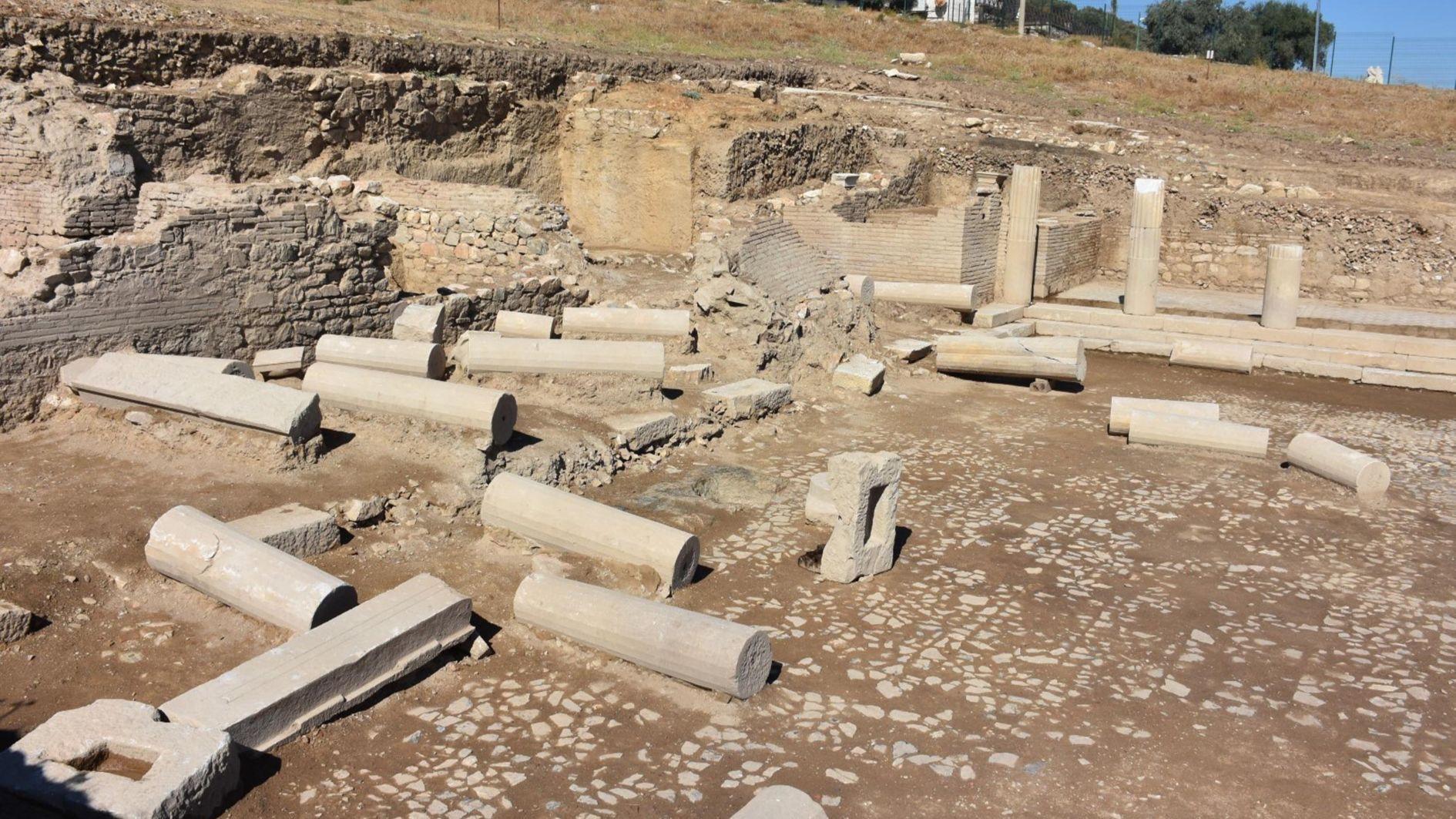
An 1,800-year-old agora, believed to have been the commercial center during the Roman period, has been unearthed in excavations in the ancient city of Metropolis, known as the “City of the Mother Goddess,” in İzmir.
Burak Arslan, deputy head of excavations from Ege University, said, “This may be the most important commercial center we have found in Metropolis so far. It is a very large complex planned in the Roman expansion area on the southern slopes of the city.”
Excavations in Metropolis, located between the Yeniköy and Özbey neighborhoods of the Torbalı district have been carried out since 1989. Many monumental structures have been unearthed in the excavations led by Professor Serdar Aybek from Dokuz Eylül University. This year’s excavations uncovered the agora, the commercial center of the period, dating back 1,800 years.
Speaking about the significance of the ancient city, Arslan said: “Metropolis is the largest ancient settlement discovered in the Torbalı region. It was founded in the acropolis as a Hellenistic city center in the third century B.C. Later, in the second century B.C. and during the Roman Imperial period, it expanded toward the plain. From the third century B.C. until the 14th century A.D., it is possible to see uninterrupted traces of settlement in the city.”
Regarding this year’s excavations, Arslan said: “The section we call parcel 1381 is one of our new excavation areas. Excavations we started in this parcel in 2021 are continuing at full speed. This area was probably the agora building used as a commercial center during the Roman Imperial period. In previous years, we had uncovered the northern portico with mosaics. The mosaic pavement here dates back to the second century A.D. This year we are uncovering the western portico. People accessed the shops behind through these porticoes. They were able to meet their daily needs there. We have started to unearth the shops in the agora. We hope to continue revealing these shops in the southern direction as well. The building most likely continued to function as an agora until the 5th or 6th century A.D.”
Providing further information about the agora that has begun to be unearthed, Arslan added:
“Although this is a structure we have uncovered in recent years, it may be the most important commercial center in Metropolis so far. It is a very large complex planned in the Roman expansion area on the southern slopes of the city. A façade architecture in the Doric order dominates the colonnaded porticoes. The agora, a structure 1,800 years old, likely lost its function due to an earthquake. In our archaeological excavations, based on the collapse positions of the columns and the extent of the damage, we can identify the traces of a natural disaster. They have collapsed directly toward the inner sections of the portico. At the moment, it seems possible to relate this to an earthquake.”